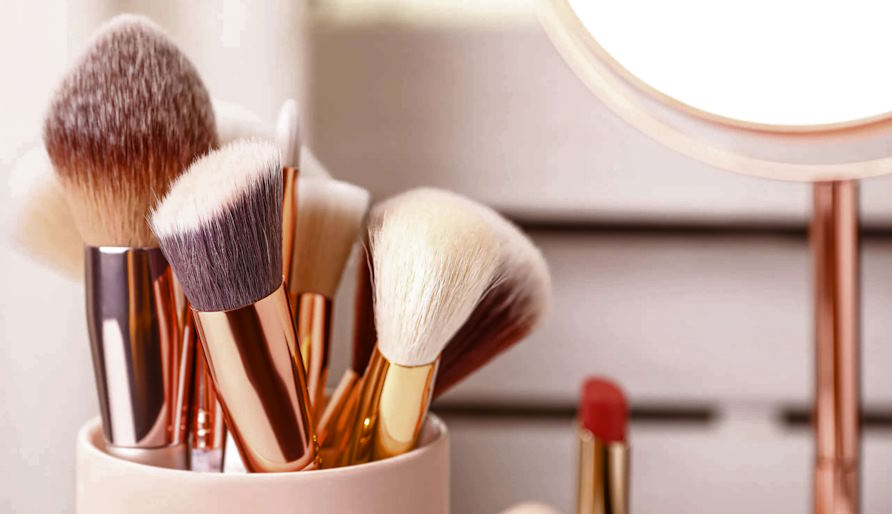- Beauty Secrets for the Modern Woman
- 812-352-0655
- [email protected]
Makeup Tips for Acne-Prone Skin: Covering Blemishes with Confidence
Nail Art for Short Nails: Maximizing Style with Limited Length
24/12/2022Heatless Hairstyling: Achieving Gorgeous Looks without Heat Damage
17/02/2023Acne can be a frustrating and confidence-shaking experience for many individuals. The presence of blemishes and breakouts can leave us feeling self-conscious and longing for a solution that allows us to face the world with confidence. That’s where makeup comes in. Makeup has the power to not only conceal imperfections but also boost our self-esteem. However, navigating the world of makeup for acne-prone skin can be overwhelming, with concerns about clogged pores and exacerbating the condition.
Preparing Acne-Prone Skin for Makeup
Establishing a proper skincare routine
When it comes to makeup application on acne-prone skin, a solid skincare routine is the foundation for success. A diligent and consistent routine helps create a healthy canvas for makeup while addressing the specific needs of acne-prone skin.
- Cleansing, toning, and moisturizing: Start your skincare routine with a gentle cleanser formulated for acne-prone skin. Look for cleansers with salicylic acid or benzoyl peroxide to help unclog pores. Follow up with a toner to balance the skin’s pH and remove any remaining impurities. Moisturizing is crucial, even for oily or acne-prone skin. Opt for oil-free, non-comedogenic moisturizers to keep the skin hydrated without clogging pores.
- Exfoliation and managing dead skin cells: Regular exfoliation is essential for acne-prone skin to remove dead skin cells and prevent clogged pores. However, be gentle and avoid harsh scrubs that can irritate the skin and worsen acne. Choose chemical exfoliants containing ingredients like glycolic acid or salicylic acid, which help unclog pores and promote cell turnover.
- Treating active breakouts and reducing inflammation: Spot treat active breakouts with acne-fighting ingredients like benzoyl peroxide or tea tree oil. These treatments help reduce inflammation and speed up the healing process. Additionally, consider using products with soothing ingredients such as aloe vera or chamomile to calm redness and irritation.
Primer and its role in creating a smooth canvas for makeup application
Primer plays a crucial role in preparing acne-prone skin for makeup by creating a smooth base and extending the longevity of your makeup.
- Choosing a primer suitable for acne-prone skin: Look for primers specifically formulated for acne-prone or sensitive skin. Opt for oil-free and non-comedogenic options to prevent pore clogging. Additionally, consider primers with ingredients like silicone, which help blur imperfections and create a smoother appearance.
- Applying primer correctly for optimal results: After completing your skincare routine, apply a thin layer of primer all over your face, focusing on areas with enlarged pores or acne scars. Gently massage the primer into your skin, allowing it to fill in any uneven texture. This step creates a smooth canvas for your foundation and helps it adhere better, ensuring a longer-lasting makeup look.
Foundation and Concealer Application Techniques
Selecting the right foundation for acne-prone skin
Choosing the right foundation is crucial when it comes to achieving a flawless base for acne-prone skin. Consider the following factors to ensure the best results:
- Coverage options: Determine the level of coverage you desire. Sheer foundations provide a lighter, more natural finish, while medium and full coverage options offer more camouflage for blemishes and discoloration.
- Liquid, powder, or cream formulations: Acne-prone skin tends to be oilier, so opt for oil-free and non-comedogenic formulas. Liquid foundations are often preferred for their blendability and ability to provide hydration. Powder foundations can be suitable for those with oily skin, as they help absorb excess oil. Cream foundations offer a thicker consistency and are ideal for covering more severe acne or scarring.
Applying foundation evenly and avoiding a cakey appearance
To achieve a seamless and natural-looking foundation application:
- Start with a clean, moisturized face.
- Use a damp makeup sponge or a brush to blend the foundation evenly onto the skin.
- Begin with a small amount of product and build up coverage gradually, focusing on areas that require more attention.
- Pay special attention to blending along the jawline and hairline to avoid visible lines of demarcation.
- If necessary, lightly set the foundation with a translucent powder to enhance its longevity.
Concealing blemishes and hyperpigmentation effectively
Concealers are the secret weapon for covering blemishes and hyperpigmentation. Try the following techniques to achieve a flawless complexion:
- Color correcting techniques: For severe redness or dark spots, color correctors can be highly effective. Green color correctors neutralize redness, while peach or orange tones counteract dark circles and hyperpigmentation. Apply the color corrector sparingly to the targeted areas before applying foundation.
- Layering and blending concealer for natural coverage: Choose a concealer that matches your skin tone or is slightly lighter. Dab a small amount onto the blemish or discoloration and gently blend the edges using a clean fingertip, brush, or sponge. Avoid rubbing or tugging on the skin, as this can aggravate acne. Set the concealer with a light dusting of translucent powder to prevent creasing.






